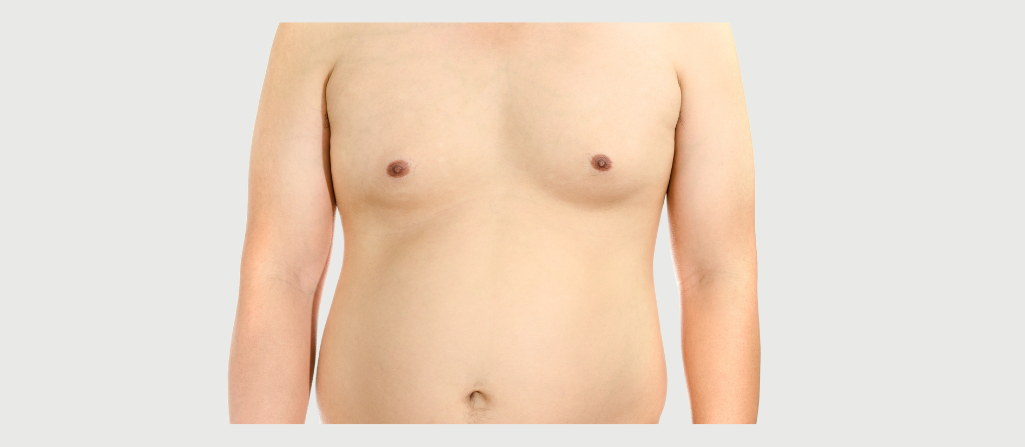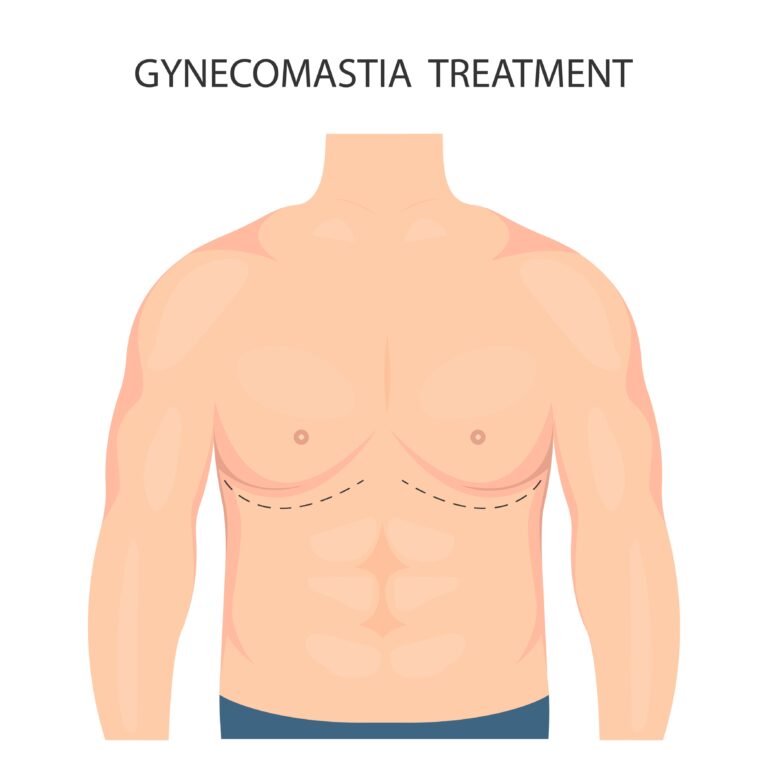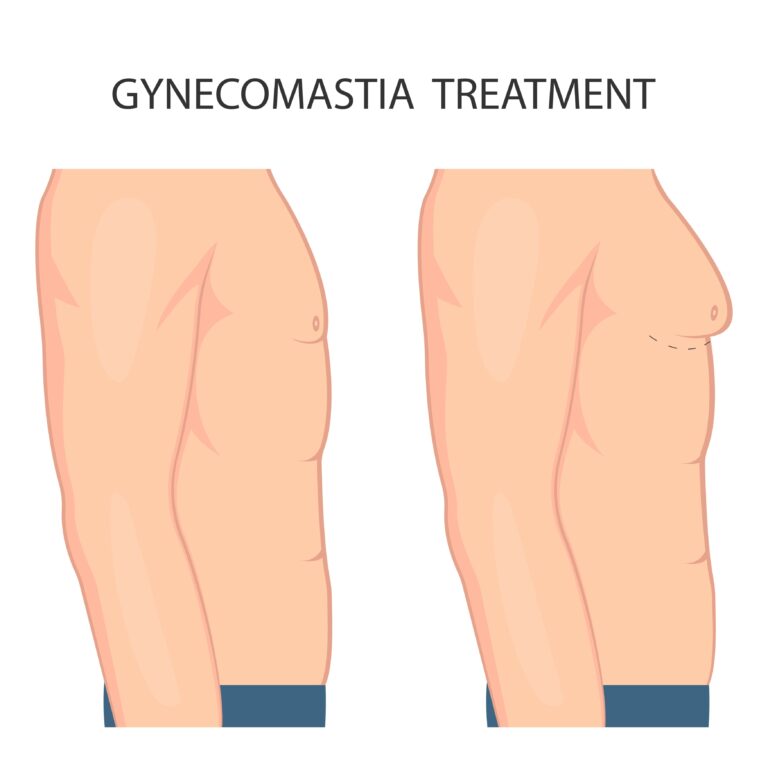Gynecomastia: How to Spot the Signs and Take Action

Gynecomastia, commonly referred to as “man-boobs” or “gyno,” is a concerning physical condition that affects many males. Sometimes it’s not easy to differentiate between Gynecomastia and normal chest fat.
Gynecomastia occurs when there is an abnormal growth of breast tissue in males, which can also be caused by weight gain or obesity. Although this condition can affect males of any age, it’s more prevalent in middle-aged and older men.
Gynecomastia surgery, also known as male breast reduction surgery, is considered the most effective and long-lasting treatment for Gynecomastia. This procedure involves removing excess breast tissue and sculpting a more masculine chest contour.
4 Most common gynecomastia symptoms to identify gynecomastia
To determine if you have Gynecomastia, look for these four characteristics: sagging chest, round chest, pointed pectoral ridges, or puffy nipples.
Why these?
- Sagging of the chest occurs due to increased weight of breasts or due to weight loss.
- A round chest may be seen in bodybuilders who develop gynecomastia due to the use of anabolic steroids or other performance-enhancing drugs.
- Pointed pectoral ridges can be an indication of gynecomastia because they indicate the growth of breast tissue in a specific area, causing the pectoral muscles to have an incongruous shape.
- Puffy nipples, on the other hand, are a clear indication of gynecomastia because they give the appearance of feminine breasts. This occurs when the breast tissue under the nipple swells, causing the nipple to become puffy and protrude.

Older men may experience sagging skin on their chest after successful weight loss, while bodybuilders may have a spherical appearance. Men can also develop pointed pectoral muscles, and puffy nipples, which can appear feminine, are a clear indication of Gynecomastia. Fortunately, all of these issues can be treated through various methods, including surgery.
How to get rid of gynecomastia?
There are several ways to get rid of gynecomastia, ranging from non-surgical to surgical options.
- Lifestyle changes: In some cases, gynecomastia can be treated by making lifestyle changes. This can include losing weight through a healthy diet and regular exercise, avoiding alcohol and drugs that may contribute to gynecomastia, and reducing stress levels.
- Medications: Certain medications can be prescribed by a doctor to treat gynecomastia. These may include selective estrogen receptor modulators (SERMs), aromatase inhibitors, or testosterone replacement therapy.
- Compression garments: Wearing compression garments, such as a compression vest, can help reduce the appearance of gynecomastia by flattening the chest area. This is a temporary solution and does not provide a permanent cure.
- Surgery: In cases where lifestyle changes and medications are ineffective, surgery may be an option. The most common surgical procedure for gynecomastia is male breast reduction surgery, which removes excess breast tissue and fat from the chest area.
Surgery is often considered the most appropriate treatment for gynecomastia when other non-surgical options have not been effective or in cases of severe gynecomastia. Surgery can provide a permanent solution to gynecomastia, as excess glandular tissue and fat are surgically removed from the chest area.
What is gynecomastia surgery?
Gynecomastia surgery is a type of surgical procedure that is used to treat gynecomastia, a condition in which males develop enlarged breast tissue. The surgery is also known as male breast reduction surgery.
During gynecomastia surgery, excess glandular tissue and fat are removed from the chest area, creating a flatter, more masculine contour.
What is involved in it?
It involves making an incision around the nipple or in the underarm area and removing the excess tissue and fat. In some cases, liposuction may also be used to remove excess fat from the chest area.
Dr. Hasan Ali is a highly skilled surgeon for gynecomastia in Dubai, as he is an expert in liposuction surgery, which includes gynecomastia surgery. His mastery of liposuction techniques, including VASER liposuction, has made him a pioneer in the UAE and well-respected for advanced body contouring and 4D Hi Def liposuction surgeries.
While surgery may be an effective treatment option for gynecomastia, it is important to note that it does come with some risks and potential complications. These may include bleeding, infection, scarring, asymmetry, and changes in nipple sensation. Gynecomastia surgery recovery time may also vary, with some individuals experiencing swelling and discomfort for several weeks following the procedure.
So, feel no more embarrassment. Book an appointment with Dr. Hasan Ali at Hasan Surgery to talk about your gynecomastia issues.

